Journey with the ASPP/ASPB
Guest Post by By Jane Shen-Miller, University of California, Los Angeles
am grateful to have received the 2018 ASPB Charles-Reid-Barnes Award (CRBA). When President Henry Klee presented me the plaque I wanted to cheer. President Rob Last has now given me that chance.
The first President of the ASPP (American Society of Plant Physiologists), Charles A. Schull — who endowed the CRBA — was familiar with the plant I am studying, calling it the “Manchurian Lotus1.” At the 30th Anniversary of the ASPP-Conference, he described our society as a dormant Lotus-seed in an ancient peat-bed waiting for germination. We now know, 40 years later, a dormant seed from that very lake bed has germinated, and was 14C-dated to 1,300 years old2! Similarly, ASPP, which evolved to become ASPB, will soon attain centennial longevity, having three scholarly journals feeding the plant-world, with research/travel-assists and an interactive Plantae-Community platform serving our Comrades-in-Plant.
“Cheers to ASPB!” Ω “Hooray to Manchurian Lotus!”
ASPP/ASPB Umbrella I first attended the ASPP-conference as a student of Horticulture, with ASPPer Michigan-State-University mentor, Fred Teubner. During this venture, I had an interview with ASPPer Solon Gordon for a Postdoc Fellowship at the US Atomic Energy Commission’s Argonne-National-Laboratory, near Chicago, IL. For our NASA-funded weightlessness-study, we published the use from tissue-culture of seeds a new model-plant Arabidopsis3 in 1966 and designed and built innovative-clinostats in preparation for the plant-journey in space. The ASPP regional-&-national meetings became my outings for science and the venue for interacting with scientists from whom I learned. ASPP/ASPB became a second home, my home of science for 59 years.
Plant Physiology Editor-in-Chief Marty Gibbs and Jan Van Overbeek took me under their wings on the ASPP-Editorial-Board (1972-1977) and sprung me onto the Governing-Board of AIBS (American Institute of Biological Sciences; 1973-1980). I became a government “bureaucrat” at the urging of US-NSF Program-Director Eli Romanoff and worked with him at the Metabolic-Biology Program (1977-1979). Together we watched plant science flourish. ASPPers Lawrie Bogorad and Bob Burris came to the Hill to testify for the research support of photosynthesis and nitrogen-fixation. These studies were funded in the very first Farm-Bill of the USDA. NSF endorsed our “Golden Nuggets” of plant science in the succeeding rounds of funding. With ASPPer Mary Clutter at the helm of the NSF-Cell-Biology Program, fellow-ASPPers Joe Key, Maarten Chrispeels, Lowell Lewis, and Charles Cleland at the USDA, Walter Rosen, EPA, Bob Rabson, DOE and Thora Halstead, NASA, plant science entered the national limelight.
US Botanical-Delegation With the goodwill promoted between the US-China plant communities by ASPPer Art Galston, a 1978 US-Botanical-Delegation was invited to the People’s Republic of China at the opening for the “Spring-Time-of-Science” before the normalization of national diplomacy. In this 10-member delegation, Bogorad was our leader, and Dick Hageman and I were the other ASPPers. This visit was my first homecoming — I was born in China with education through high school. Through this visit, I received a gift of 7 seeds of the Manchurian Lotus including the one with 1,300-yr-longevity.
Chance-Collaboration The Aquatic Asian-Lotus, Nelumbo nucifera, routinely propagates by the asexual reproduction of rhizomes. Should a population be wiped out by a natural disaster, its seeded-fruits with the longevity of hundreds- and thousand-years2 can sprout and give rise to a new crop in a wetland when conditions become favorable. This is a wonderful example of “Darwinian Natural Selection.” Sequencing the genome in 2013 of this remarkable plant4 was led by ASPBer Ray Ming, previously a total stranger who became captivated by the story of Manchurian Lotus during our bus-ride to the Merida-Mexico-ASPB-Meetings. From strangers-to-collaborators, a wonderful “chance-encounter” can only happen in a milieu like that of the ASPB!
Lotus Fruits — Genome-of-a-Universal-Survival-kit for All Biota — An Offer: I have a collection of more than a hundred fruits from the same ancient peat-bed touted by our Inaugural-President Schull. I wish to share the Manchurian Lotus with my fellow ASPBers (my email: [email protected]) so that we can thrash its genome for novelties in growth, aging, repair, and stress-abatement in salute to the jubilation of the 2024 ASPB-Centennial!
Let’s Do It!
“Gazing into the Crystal Ball” The three bloggers featured in the Plantae Community of President Last et al.’s recent letter (https://community.plantae.org/path/5176525868138235534) offered prescient experience in education. Our science needs emphasis in Interdisciplinism- Avoid-Dogmaticism. “Nature-is-Not-Compartmentalized,” “Trust-Test-&-Verify,” “Paradigm-Shift” plus the “Mutual-Supporting–Generosity” are “hallmarks-for-good-science,” perspectives gained from my spouse, Bill Schopf5. Schopf, a geol-paleobiologist and a soul-mate, is another windfall I reaped from the US Botanical-Delegation to China.
Wrenbeck-Beaudoin-Milo, who contributed to the above blogs in the “Crystal Ball http://bit.ly/NextGenerationCareers” are to be congratulated for their astuteness. The prize-winning ASPB Plantae-Community is a valued stage for us to Educate-Nurture-&-Share! I applaud our Society for providing this powwow!
ASPP/ASPB represents a path-finder for an important phase of my journey-in-science. I treasure this expedition. I thank ASPP/ASPB for providing me the “Fuel”!
1Schull (1955) Plant Physiol 30(1):1-4. 2Shen-Miller et al. (2013) Tropical Pl Biol 6:53-68/6:69-84. Food-Science Podcast (2019) https://gastropod.com/seeds-of… 3Shen-Miller & Sharp (1966) Bull Torrey Bot Club 93(1):68-69. 4Ming et al. (2013) Genome Biol 14:R41. 5Schopf (2019) Life in Deep Time, Darwin’s “Missing” Fossil Record … Paradigm-Changing Science, CRC Press.


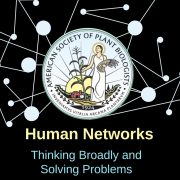
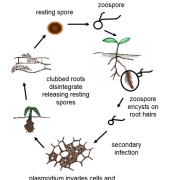
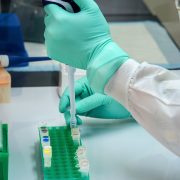
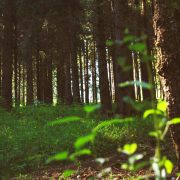
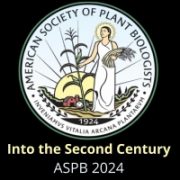
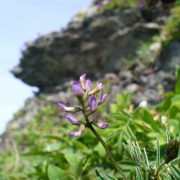

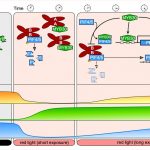
Leave a Reply
Want to join the discussion?Feel free to contribute!